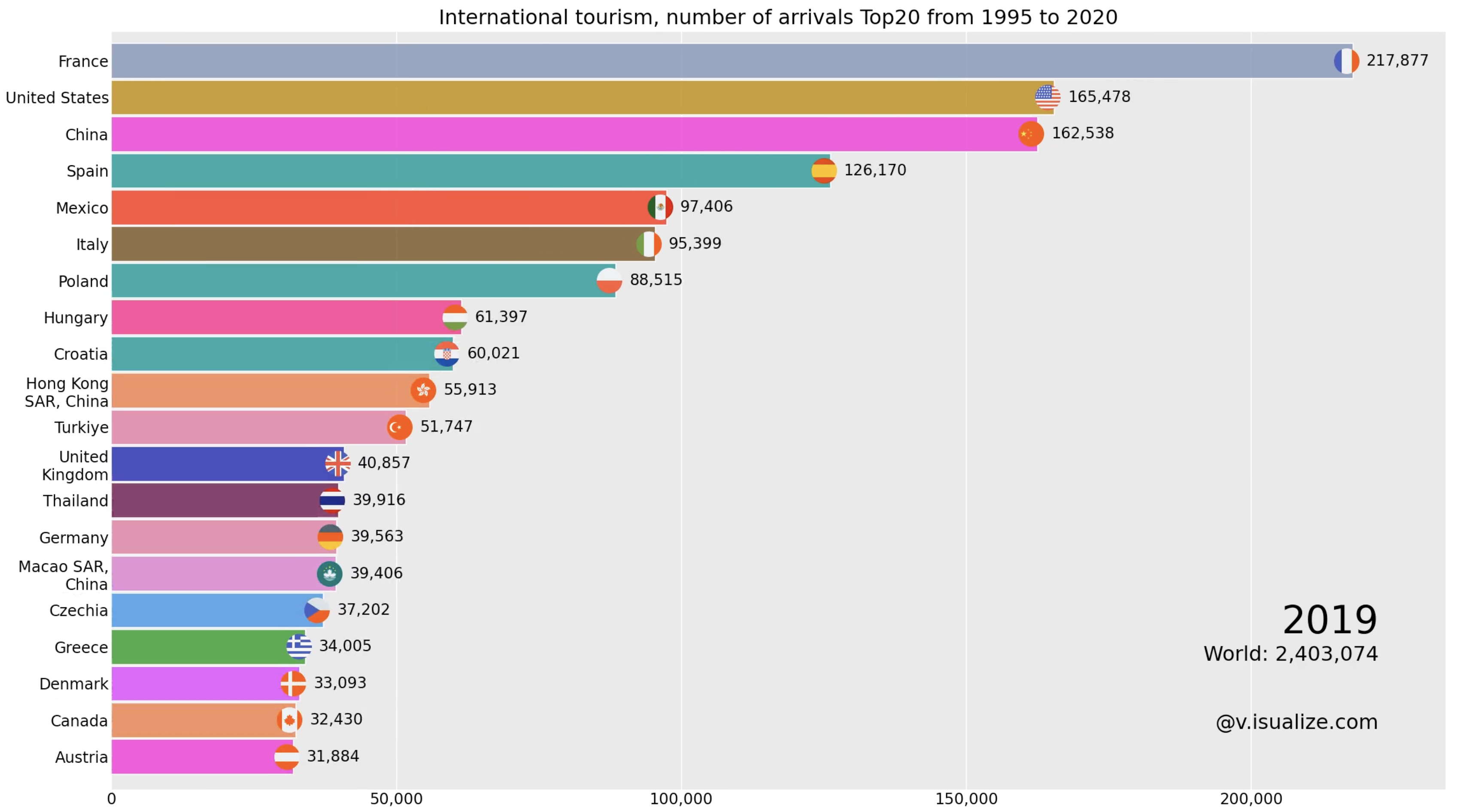International inbound tourists (overnight visitors) are the number of tourists who travel to a country other than that in which they have their usual residence, but outside their usual environment, for a period not exceeding 12 months and whose main purpose in visiting is other than an activity remunerated from within the country visited. When data on number of tourists are not available, the number of visitors, which includes tourists, same-day visitors, cruise passengers, and crew members, is shown instead. Sources and collection methods for arrivals differ across countries. In some cases data are from border statistics (police, immigration, and the like) and supplemented by border surveys. In other cases data are from tourism accommodation establishments. For some countries number of arrivals is limited to arrivals by air and for others to arrivals staying in hotels. Some countries include arrivals of nationals residing abroad while others do not. Caution should thus be used in comparing arrivals across countries. The data on inbound tourists refer to the number of arrivals, not to the number of people traveling. Thus a person who makes several trips to a country during a given period is counted each time as a new arrival (World Bank).
Key Observations:
- Global tourism arrivals doubled from 1 billion in 1995 to 2.4 billion in 2019, showcasing robust growth across all regions, with high-income and OECD countries leading in numbers.
- Europe remained a top destination, with the EU’s arrivals increasing from 543 million in 1995 to 970 million in 2019, reflecting the continent’s enduring appeal.
- Emerging markets saw significant growth in tourism, with upper-middle-income countries’ arrivals rising from 455 million in 1995 to 573 million in 2019, indicating their growing attractiveness.
Source: THE WORLD BANK



Comments